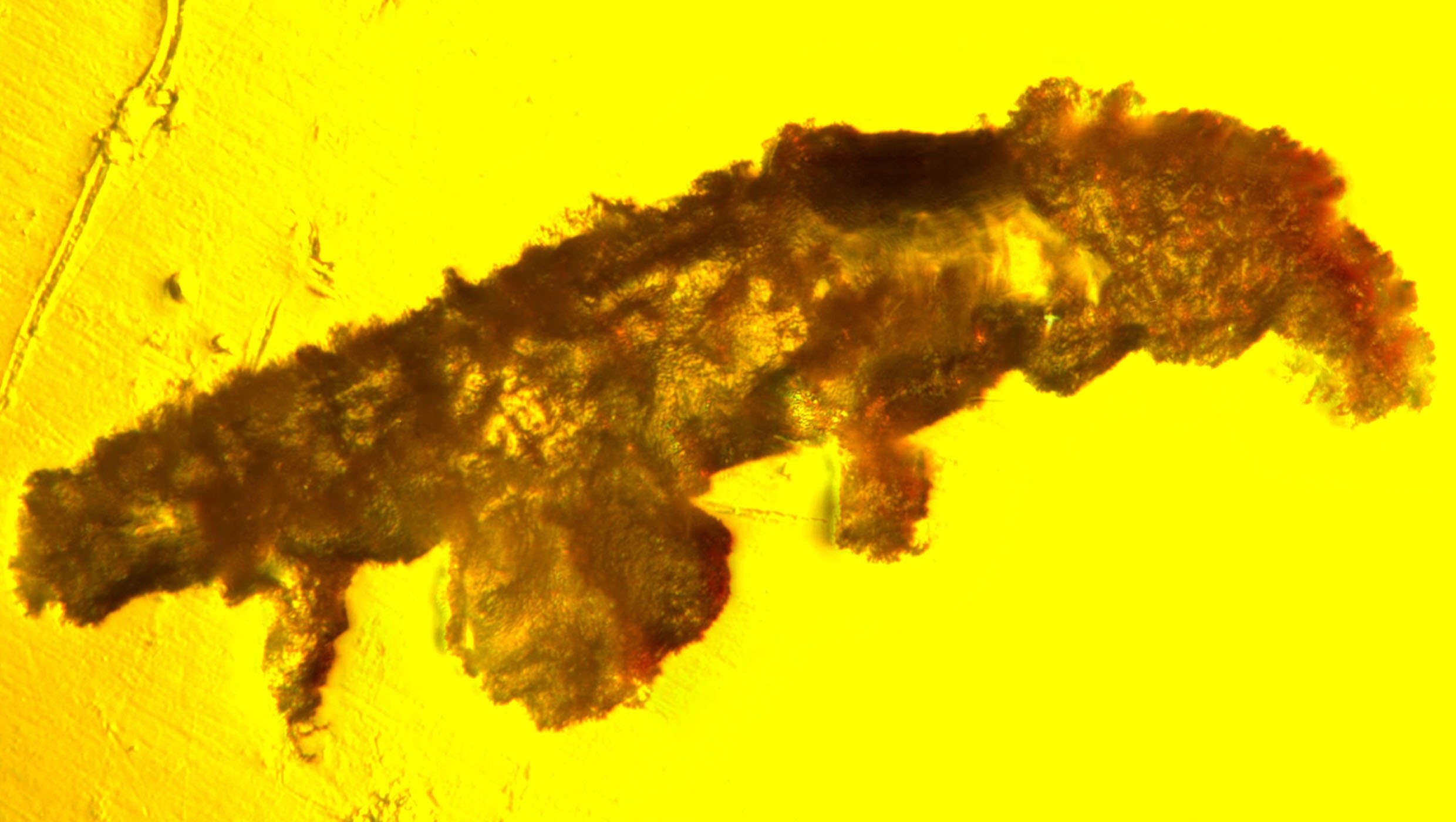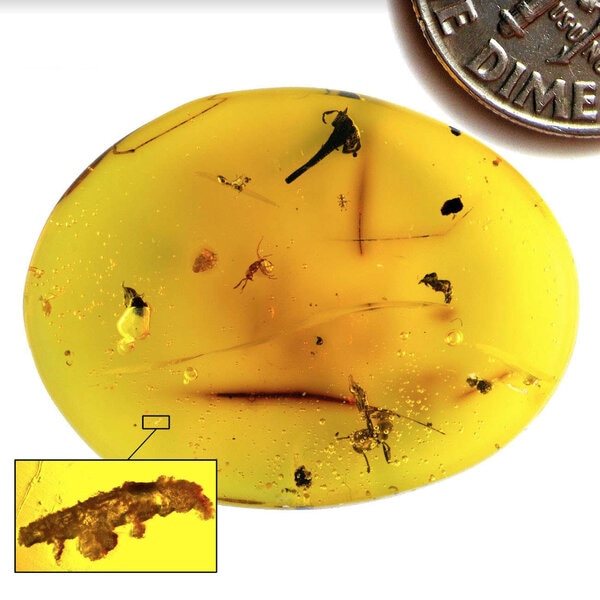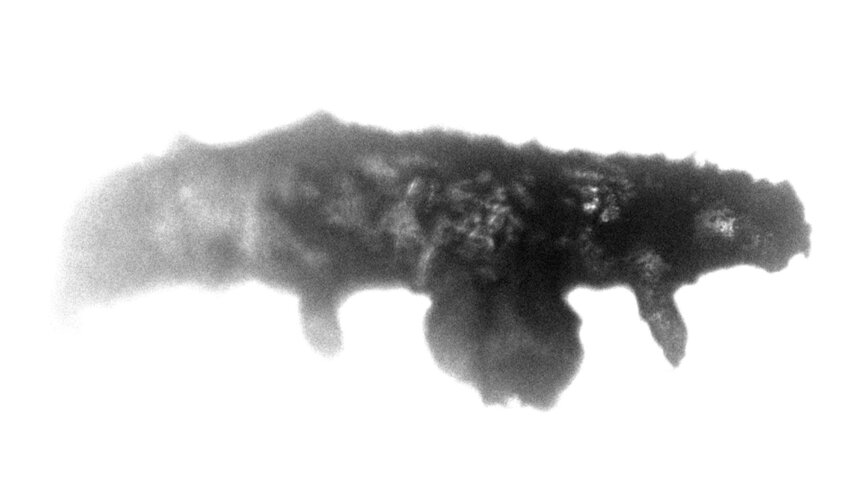Create a free profile to get unlimited access to exclusive videos, sweepstakes, and more!
Extinct tardigrade species almost lost to time found trapped in 16-million-year-old amber

They have been able to survive being frozen, desiccated, highly irradiated, blasted from a gun, and even exposed to the vacuum of space, but tardigrades only have these superpowers while alive. Try finding a fossilized one.
Fossil tardigrades are so rare that only two were previously found, both trapped in amber, along with a questionable third specimen that had degraded so much, its genus and species could not be determined. None have ever been found in stone. Their bodies may be able to put up with things that could kill a human in seconds, but after death, these extremophiles can’t be preserved by anything else but globs of tree sap that harden over millions of years.
Now a fourth fossil has emerged from a piece of Dominican amber, and not only is it the first Cenozoic (the era that began after the dinosaurs were annihilated 66 million years ago) specimen, but also an entirely new genus and species, and the most pristine fossilized tardigrade to have ever been found. Paradoryphoribius chronocaribbeus appeared like extant tardigrades on the outside, but the inside couldn't have been more different.
The tiny creature was hiding in plain sight, as researcher Marc Mapalo of Harvard, who led a study recently published in Proceedings of the Royal Society B, found out when he was originally observing prehistoric ants hiding in the same piece of amber.
“Since this fossil is very small (around half a millimeter), we needed to use microscopes that can allow us to see the sample in higher magnifications,” Mapalo tells SYFY WIRE. “We also wanted the image to have a high resolution and contrast so we could see the fine details of its body structures.”
Tardigrades hardly ever appear in amber, both because they are easily missed and are soft invertebrates that lack mineralization that makes it possible for animals with hard shells or bones to fossilize. This one was thought to be no more than a random inclusion until Mapalo took a closer look and then zoomed in even closer with confocal laser microscopy — an imaging technique usually reserved for seeing specimens on a cellular or molecular level.
Though P. chronocaribbeus had external features like extant tardigrades, including similar mouthparts, eight legs, and claws 20 to 30 times finer than the average human hair, its foregut was something no one had ever seen. This explains why Mapalo and his team had to create a new genus. These bizarre life-forms are thought to have been around for around 540 million years and not changed much, but they may have taken time to evolve on the inside.
“Even though the tardigrade body appears to have not changed externally, some of its internal structures experienced changes over millions of years,” he says. “This leads to other questions about changes that could have occurred in the past and other potential differences in extinct tardigrades.”
However long tardigrades have been around, we still know so little about them besides their almost supernatural feats of survival. Maybe there was no need for their insides to evolve until life exploded during the Cambrian period. With so many more creatures around, they might have suddenly had to compete for and find new sources of food to survive, which also makes it possible that how they digested things had to change. The reason remains unknown.
Mapalo believes that studying extant species may reveal how and why the tardigrade foregut evolved, and possibly what phase of evolution the new species was going through when it existed. A proto-tardigrade found in Siberia appeared more like a balloon with legs than what we recognize as a tardigrade, and hadn’t yet developed its fourth pair of legs, so their outsides must have also morphed. Why tardigrades became so tiny is another unanswered question.
“They probably evolved to have a small body plan in order to fill ecological niches and protect themselves from predators and stress,” Mapalo says. “When the diversity of animals started to increase exponentially and environmental changes were common, it was probably more beneficial for them to undergo miniaturization.”
So did any of those tardigrades that crashed on the Moon make it out alive? That is another question we’re just going to have to wait to answer.




























